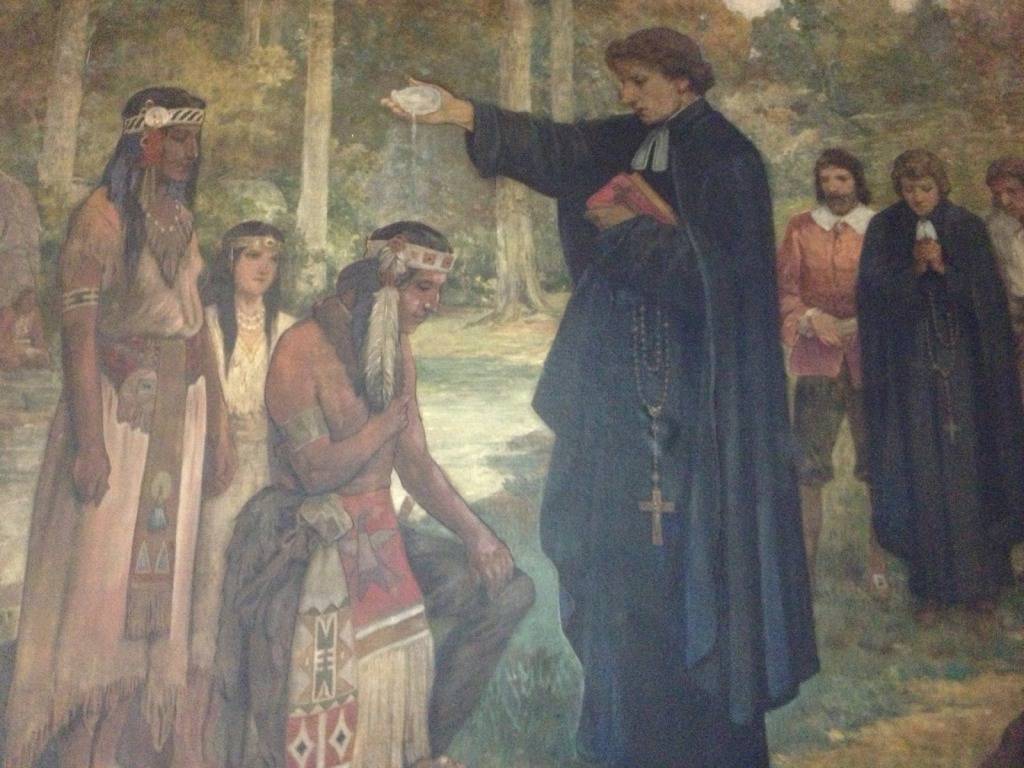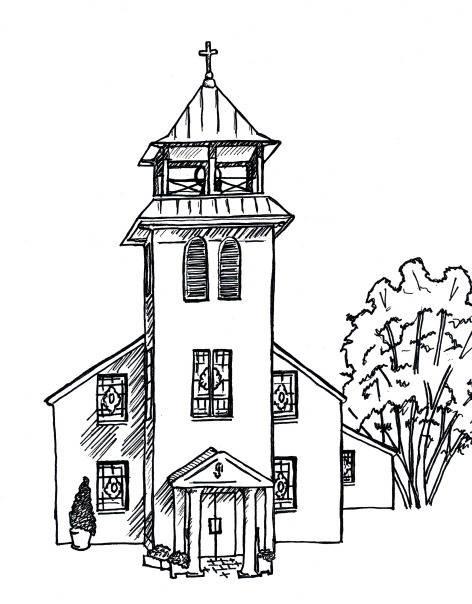History of St. Joseph Parish
St. Joseph Parish in Pomfret, Maryland was founded in 1763 by Father George Hunter, S.J. Life for these early Catholics was very difficult; they were not permitted to practice their faith and were tormented unmercifully until 1777. Manor houses were approved for housing the priest and chapels were permitted in cemeteries, solely for the purpose of conducting services for the dead. In St. Joseph’s cemetery there is a large stone marker topped with a cross where such a chapel stood. In these difficult years, wealthier Catholics constructed an additional room onto their houses where Mass could be conducted; in more modest homes the Sacraments were offered in whatever space was available. These homes where Mass and Catholic worship was active, but underground were known as "stations". Surrounding St. Joseph’s area there were seven such stations.
The economy of the area was historically based on the vast tobacco plantations which were run by slave labor. About 30  percent of our current parishioners are descended from these slaves. Saint Joseph’s architecture is typical of the simple lines of many 17th and 18th century Catholic churches in Southern Maryland with its white pews and slave balconies. Both before and after the Civil War many of the white land owners deeded acreage to their freed slaves. Unfortunately, some of the land was poor; in fact, St. Joseph’s church is built on the "Great Charles County Swamp."
percent of our current parishioners are descended from these slaves. Saint Joseph’s architecture is typical of the simple lines of many 17th and 18th century Catholic churches in Southern Maryland with its white pews and slave balconies. Both before and after the Civil War many of the white land owners deeded acreage to their freed slaves. Unfortunately, some of the land was poor; in fact, St. Joseph’s church is built on the "Great Charles County Swamp."
The parish is also comprised of the mixed blood descendants of the Algonquin Indians who had numerous tribes including the Potomac and Piscataway Indians of our area. As early as 1639, with the arrival of the Ark and the Dove, many of their ancestors were converted to the faith. About 20 percent of our parish is comprised of these people of Native American heritage.
In addition, we still have parishioners who are descended from Dr. Samuel Mudd (who set John Wilkes Booth’s leg after the assassination of President Abraham Lincoln), from Mother Catherine Spalding, who founded the Sisters of Charity of Nazareth and from the family of Archbishop Leonard Neale, the second Archbishop of Baltimore (he was also pastor of St. Joseph’s in the 1700’s.) The first Carmelite Monastery in the new world was established within what were then the boundaries of the parish; indeed the statue of St. Joseph beside the church in the prayer garden was originally within their cloister.
In 1849 the present St. Joseph’s church was dedicated. In 1948 the parish formally began co-sponsoring Archbishop Neale School, making it the Catholic elementary school of our parish. Priests of the Archdiocese of Washington were assigned to take over from the Society of Jesus in the 1950’s and they continue to serve the spiritual needs of the parish community. In the 1970’s, 1980’s and 1990’s extensive restoration efforts were undertaken in the church.
St. Joseph’s predates the founding of our nation, and a walk through our cemetery shows family ancestries dating back  through the centuries. In recent times, the parish has seen a gradual influx of middle income families from other areas and is increasingly becoming a truly suburban parish while holding on to its rural historic charm.
through the centuries. In recent times, the parish has seen a gradual influx of middle income families from other areas and is increasingly becoming a truly suburban parish while holding on to its rural historic charm.
Presently, St. Joseph’s has approximately 750 families. Rev. Harry Stokes is our pastor. Deacon Johnny Barnes and Deacon Jim Tittinger are our parish deacons. A dedicated lay staff assists in all aspects of parish ministry and service. St. Joseph’s is an active parish, made possible by the love, concern and commitment of our parishioners, our parish "family." The word Pomfret means "bridge" and our church is attempting to be a bridge for a beautifully diverse family of believers.
